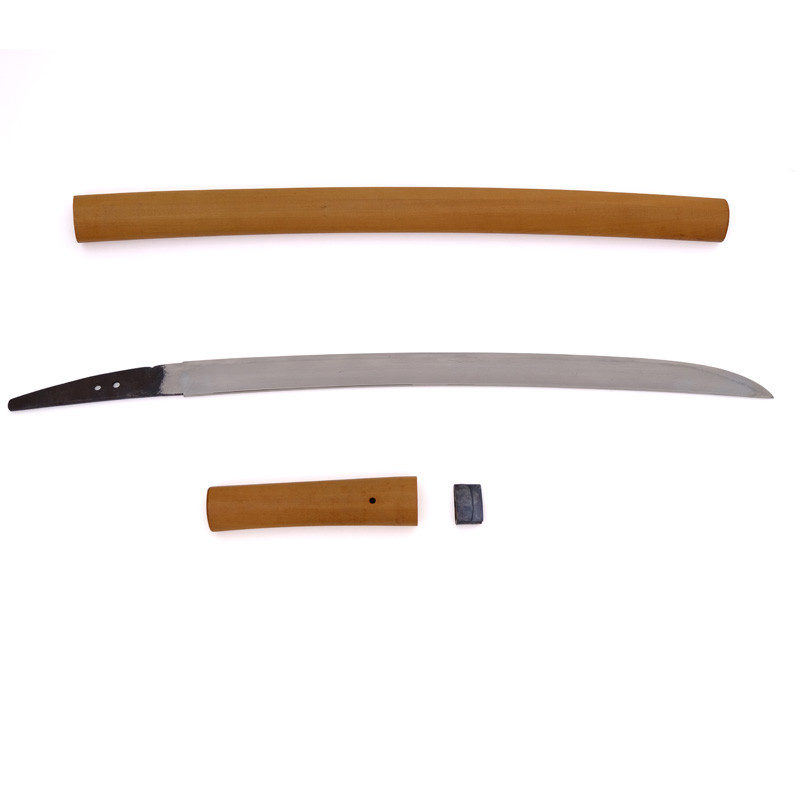













More informations about this product
| Total Weight | 0.814 kg | |
| Weight without Saya | 0.620 kg | |
| Blade Weight | 0.528 kg | |
| Full Blade length (Toshin) | 68.00 cm | |
| Nagasa | 52.50 cm | |
| Nakago Length | 15.4 cm | |
| Sori (curvature) | 1.1 cm | |
| Kissaki Length | Hira Zukuri, No Yokote for measure | |
| Moto Haba | 3.30 cm | |
| Saki Haba | Hira Zukuri, No Yokote for measure | |
| Moto Kasane | A = 0.69 cm B = Hira Zukuri, No shinogi |
|
| Saki Kasane | A = 0.42 cm B = Hira Zukuri, No shinogi |
|
| Curvature | Koshi Zori (Curvature on the first third) | |
| Type Kissaki | O Kissaki | |
| Blade Structure | Hira Zukuri (Flat sides, without shinogi and Yokote) | |
| Mune | Maru Mune (Rounded) | |
| Hamon | Ko Suguha in Nioideki with Ashi and Sunagashi, presence of Utsuri and Chikei | |
| Hada | Itame and Masame | |
| Boshi | Nie Kuzure Ko Maru Kaeri with very short return on the Mune | |
| Nakago | Ubu (original), Mumei (unsigned), 2 Mekugi Ana, Form Funagata (boat hull), Kiri Yasurime (horizontal), Nakago Jiri Kuri Jiri (rounded) | |
| Saya | Length 58.4cm, weight 192g, Shirasaya in Magnolia | |
| Tsuka & Tosogu (Tsuba, Menuki, Fuchi Kashira) |
- Tsuka: Length 18.2cm, weight 0.63g, Shirasaya magnolia - Habaki: 28g, Double habaki copper covered with Shakudo |
|
| Study & Team Review |
Wakizashi shaped Hira Zukuri 平造脇差 (without shinogi), attributed to Kai Mihara School 貝三原, in Mihara in the former province of Bingo 備後, now Onomichi in Hiroshima Prefecture. This unsigned blade is possibly the work of blacksmith Masayoshi 正賀, active around 1495 to 1530, with the known signature ‘Bingo No Kuni Mihara Kai Masayoshi’ 備後國三原住貝正賀. |
|
Share your opinion
error Your review appreciation cannot be sent
feedback Report comment
check_circle Report sent
error Your report cannot be sent